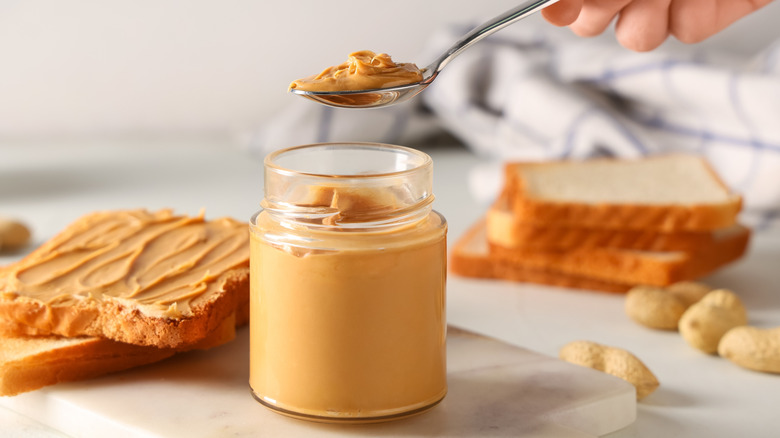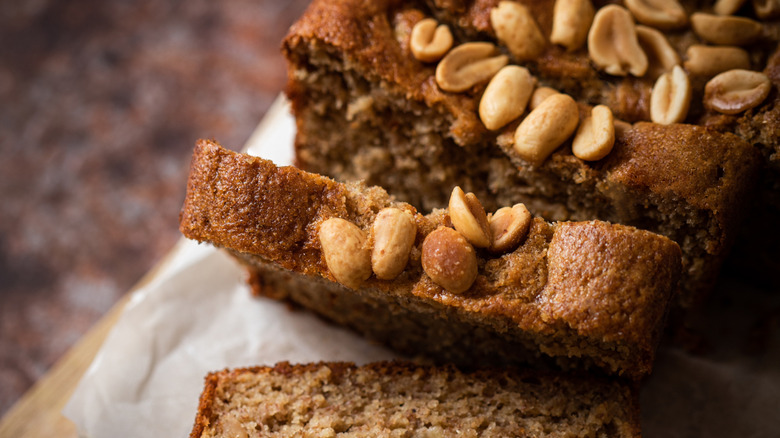Old School Peanut Butter Bread Can Be Made Without Eggs, Butter, Or Vanilla
Depression-era recipes were born from necessity, but we still enjoy plenty of these foods today, not necessarily because they're fairly inexpensive, but because they're delicious. For instance, did you know the Great Depression solidified meatloaf's place on American dinner plates? It also gave us a huge catalogue of accidentally vegan dessert recipes, since butter and eggs were in short supply during this time period. However, dauntless ingenuity ensured that these tasty treats were no less indulgent for the lack.
Take, for instance, peanut butter bread. During the 1930s, peanut farms became subsidized by the government, allowing farmers to produce plenty of crops and making peanut byproducts like peanut butter easier to obtain. Peanut butter was also common in government surplus packages, along with flour and powdered milk. That means households were more likely to have these items on hand rather than butter or eggs, which weren't shelf stable and outside many people's budgets, and therefore not readily available for baking.
Instead, homemakers of the era used peanut butter to make moist, fudgy, and protein-rich bread. Since peanuts are also a bit sweet, just a ½ cup of sugar takes this bread to the level of a dessert. Milk also added moisture, along with calcium and some extra protein and sweetness. Though modern recipes for peanut butter bread call for liquid milk, it stands to reason you could just as easily use the reconstituted powdered variety. All of this was stirred together with 2 cups of flour and baked into a tasty dessert loaf that stuck to your ribs.
Understanding this old school recipe in the modern era
One necessary hallmark of this and all other Depression-era recipes is simplicity. Much like the time period's shockingly delicious tomato soup cake, this bread relies on as few ingredients as possible, with more valuable components being used in limited amounts or replaced with a cheaper alternative. Some 21st century recipes cut the ½ cup of sugar in half and replace some of it with honey, which would have been a viable option in certain areas.
However, the most common substitution for sugar at the time was molasses, which was both abundant and inexpensive. In fact, this earthy sugarcane byproduct may be partially responsible for popularizing this innovative recipe, as the original pre-Depression recipe called for butter and sugar. Molasses was a viable replacement for both, adding sweetness and moisture alike. Though home cooks likely opted for sugar when possible, substituting molasses demonstrated that period's scrappy determination to thrive — similar to the magic of Depression-era water pie.
To experience peak authenticity, we suggest making two batches of this bread — one with sugar, and one with molasses. The all-sugar version tastes more like a peanut butter cake, while the molasses version is less sweet with a hint of astringency. Both are delicious, especially served warm with a glass of cold milk or a hot cup of coffee or tea. Though it's hefty enough for a hearty snack, you can also enjoy it alongside scrambled eggs for breakfast, or give it the French toast treatment for brinner.

